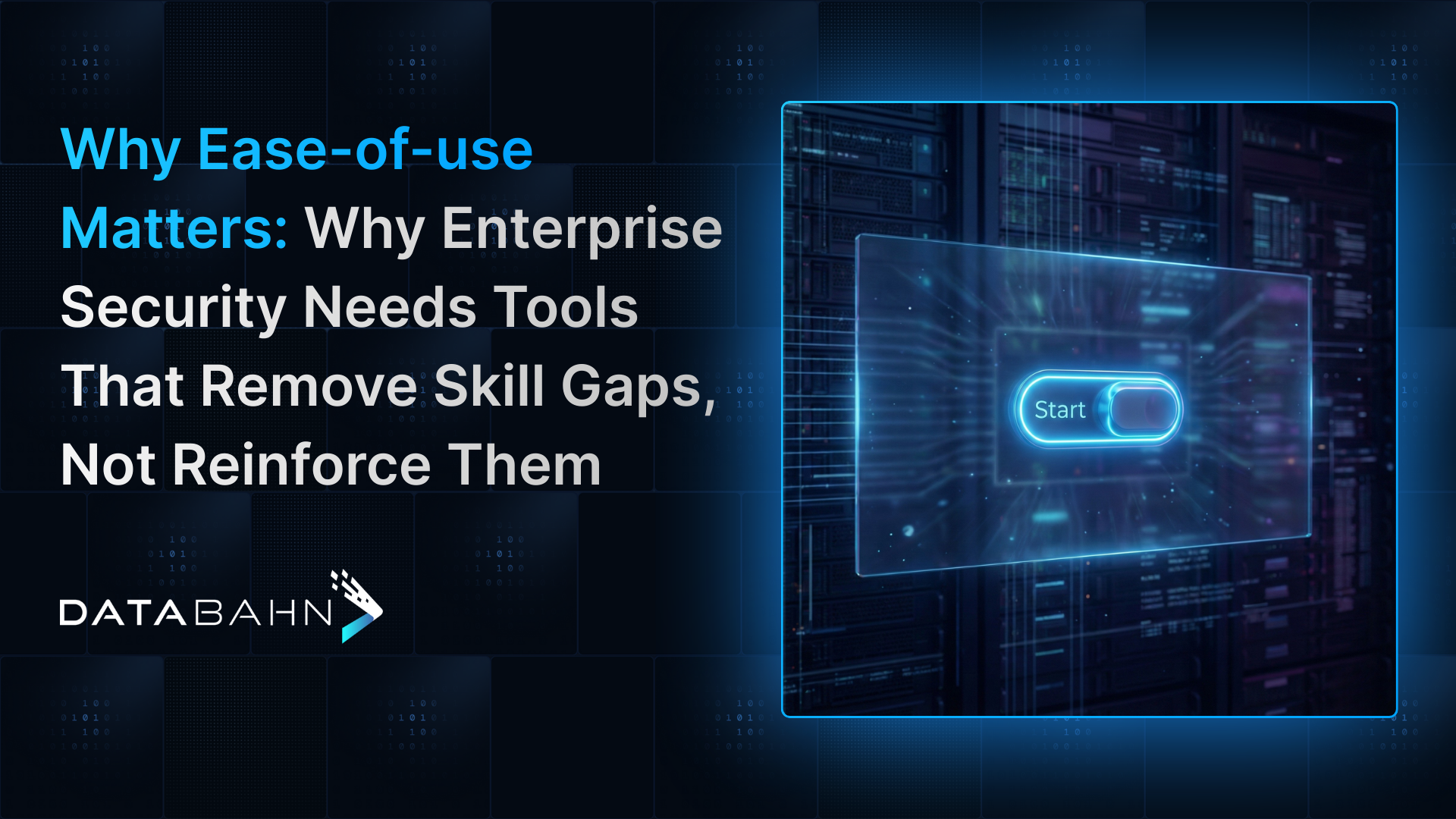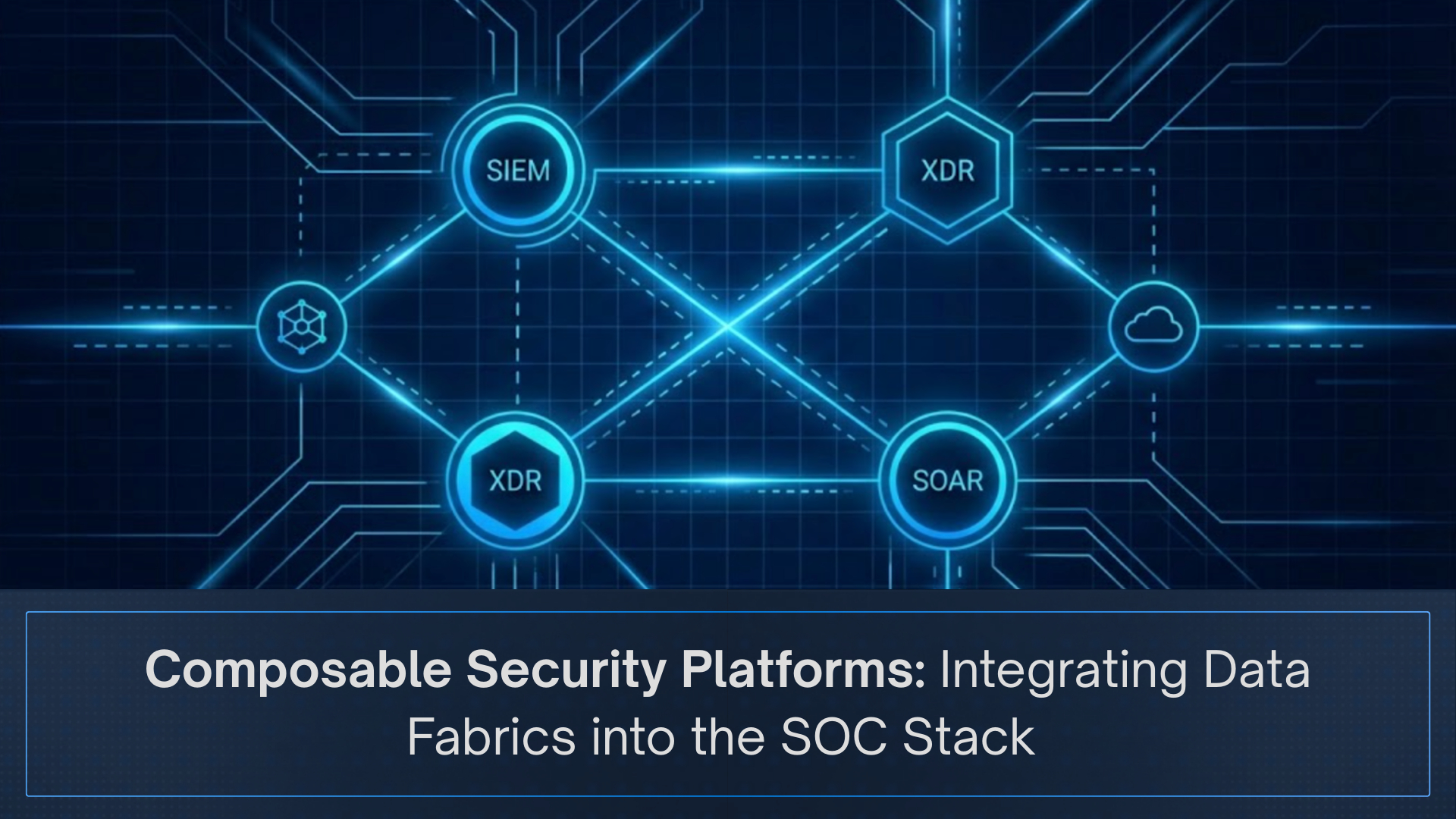“We need to add 100+ more applications to our SIEM, but we have no room in our license. We have to migrate to a cheaper SIEM,” said every enterprise CISO. With 95%+ usage of their existing license – and the new sources projected to add 60% to their log volume – they had to migrate. But the reluctance was so obvious; they had spent years making this SIEM work for them. “It understands us now, and we’ve spent years to make it work that way,” said that Director for Security Operations.
They had spent years compensating for the complexity of the old system, and turned it into a skillset.
Their threat detection and investigation team had mastered its query language. The data engineering team had built configuration rules, created complex parsers, and managed the SIEM’s field extraction quirks and fragmented configuration model. They were proud of what they had built, and rightfully so. But today, that expertise had become a barrier. Security teams today are still investing their best talent and millions of dollars in mastering complexity because their tools never invested enough in making things simple.
Operators are expected to learn a vendor’s language, a vendor’s model, a vendor’s processing pipeline, and a vendor’s worldview. They are expected to stay updated with the vendor’s latest certifications and features. And over time, that mastery becomes a requirement to do the job. And at an enterprise level, it becomes a cage.
This is the heart of the problem. Ease of use is a burden security teams are taking upon themselves, because vendors are not.
How we normalized the burden of complexity
In enterprise security, complexity often becomes a proxy for capability. If a tool is difficult to configure, we assume it must be powerful. If a platform requires certifications, we assume it must be deep. If a pipeline requires custom scripting, we assume that is what serious engineering looks like.
This slow, cultural drift has shaped the entire landscape.
Security platforms leaned on specialized query languages that require months of practice. SIEMs demanded custom transformation and parsing logic that must be rebuilt for every new source. Cloud security tools introduced their own rule engines and ingestion constraints. Observability platforms added configuration models that required bespoke tuning. Tools were not built to work in the way teams did; teams had to be built in a way to make the tool work.
Over time, teams normalized this expectation. They learned to code around missing features. They glued systems together through duct-tape pipelines. They designed workarounds when vendor interfaces fell short. They memorized exceptions, edge cases, and undocumented behaviors. Large enterprises built complex workflows and systems, customized and personalized software that cost millions to operate out of the box, and invested millions more of their talent and expertise to make it usable.
Not because it was the best way to operate. But because the industry never offered alternatives.
The result is an ecosystem where talent is measured by the depth of tool-specific knowledge, not by architectural ability or strategic judgment. A practitioner who has mastered a single platform can feel trapped inside it. A CISO who wants modernization hesitates because the existing system reflects years of accumulated operator knowledge. A detection engineer becomes the bottleneck because they are the only one who can make sense of a particular piece of the stack.
This is not the fault of the people. This is the cost of tools that never prioritized usability.
The consequences of tool-defined expertise
When a team is forced to become experts in tool complexity, several hidden problems emerge.
First, tool dependence becomes talent dependence. If only a few people can maintain the environment, then the environment cannot evolve. This limits the organization’s ability to adopt new architectures, onboard new data sources, or adjust to changing business requirements.
Second, vendor lock-in becomes psychological, not just contractual. The fear of losing team expertise becomes a bigger deterrent than licensing or performance issues.
Third, practitioners spend more time repairing the system than improving it. Much of their effort goes into maintaining the rituals the tool requires rather than advancing detection coverage, improving threat response, or designing scalable data architectures.
Fourth, data ownership becomes fragmented. Teams rely heavily on vendor-native collectors, parsers, rules, and models, which limits how and where data can move. This reduces flexibility and increases the long-term cost of security analytics.
These patterns restrict growth. They turn security operations into a series of compensations. They push practitioners to specialize in tool mechanics instead of the broader discipline of security engineering.
Why ease of use needs to be a strategic priority
There is a misconception that making a platform simpler somehow reduces its capability or seriousness. But in every other field, from development operations to data engineering, ease of use is recognized as a strategic accelerator.
Security has been slow to adopt this view because complexity has been normalized for so long. But ease of use is not a compromise. It is a requirement for adaptability, resilience, and scale.
A platform that is easy to use enables more people to participate in the architecture. It allows senior engineers to focus on high-impact design instead of low-level maintenance. It ensures that talent is portable and not trapped inside one tool’s ecosystem. It reduces onboarding friction. It accelerates modernization. It reduces burnout.
And most importantly, it allows teams to focus on the job to be done rather than the tool to be mastered. At a time when experienced security personnel are needed, when burnout is an acknowledged and significant challenge in the security industry, and while security budgets continue to fall short of where they need to be, removing tool-based filters and limitations would be extremely useful.
How AI helps without becoming the story
This is an instance where AI doesn’t hog the headline, but plays an important role nonetheless. AI can automate a lot of the high-effort, low-value work that we’re referring to. It can help automate parsing, data engineering, quality checks, and other manual flows that created knowledge barriers and necessitated certifications in the first place.
At Databahn, AI has already simplified the process of detecting data, building pipelines, creating parsers, tracking data quality, managing telemetry health, fixing schema drift, and quarantining PII. But AI is not the point – it’s a demonstration of what the industry has been missing. AI helps show that years of accumulated tool complexity – particularly in bridging the gap between systems, data streams, and data silos – were not inevitable. They were simply unmet customer needs, where the gaps were filled by extremely talented technical talent, which was forced to expend their effort doing this instead of strategic work.
Bigger platforms and the illusion of simplicity
In response to these pressures, several large security vendors have taken a different approach. Instead of rethinking complexity, they have begun consolidating tools through acquisition, bundling SIEM, SOAR, EDR, cloud security, data lakes, observability, and threat analytics into a single ecosystem. On the surface, this appears to solve the usability problem. One login. One workflow. One vendor relationship. One neatly integrated stack.
But this model rarely delivers the simplicity it promises.
Each acquired component carries its own legacy. Each tool inside the stack has its own schema, its own integration style, its own operational boundaries, and its own quirks. Teams still need to learn the languages and mechanics of the ecosystem; now there are simply more of them tucked under a single logo. The complexity has not disappeared. It has been centralized.
For some enterprises, this consolidation may create incremental improvements, especially for teams with limited engineering resources. But in the long term, it creates a deeper problem. The dependency becomes stronger. The lock-in becomes tighter. And the cost of leaving grows exponentially.
The more teams build inside these ecosystems, the more their processes, content, and institutional knowledge become inseparable from a vendor’s architecture. Every new project, every new parser, every new detection rule becomes another thread binding the organization to a specific way of operating. Instead of evolving toward data ownership and architectural flexibility, teams evolve within the constraints of a platform. Progress becomes defined by what the vendor offers, not by what the organization needs.
This is the opposite direction of where security must go. The future is not platform dependence. It is data independence. It is the ability to own, govern, transform, and route telemetry on your terms. It is the freedom to adapt tools to architecture, not architecture to tools. Consolidated ecosystems do not offer this freedom. They make it harder to achieve. And the longer an organization stays inside these consolidated stacks, the more difficult it becomes to reclaim that independence.
The CISO whose team changed its mind
The CISO from the beginning of this piece evaluated Databahn in a POC. They were initially skeptical; their operators believed that no-code systems were shortcuts, and expected there to be strong trade-offs in capability, precision, and flexibility. They expected to outgrow the tool immediately.
When the Director of Security Operations logged into the tool and realized they could make a pipeline in a few minutes by themselves, they realized that they didn’t need to allocate the bandwidth of two full data engineers to operate Databahn and manage the pipeline. They also saw approximately 70% volume reduction, and could add those 100+ sources in 2 weeks, instead of a few months.
The SOC chose Databahn at the end of the POC. Surprisingly, they also chose to retain their old SIEM. They could more easily export their configurations, rules, systems, and customizations into Databahn and since license costs were low, the underlying reason to migrate disappeared. But now, they are not spending cycles building pipelines, connecting sources, applying transformations, and building complex queries or writing complex code. They have found that Databahn’s ease of use has not removed their expertise; it’s elevated it. The same operators who resisted Databahn are now advocates for it.
The team is now taking their time to design and build a completely new data architecture. They are now focused on using their years of expertise to build a future-proof security data system and architecture that meets their use case and is not constrained by the old barriers of tool-specific knowledge.
The future belongs to teams, not tools
Security does not need more dependence on niche skills. It does not need more platforms that require specialized certifications. It does not need more pipelines that can only be understood by one or two experts.
Security needs tools that make expertise more valuable, not less. Tools that adapt to people and teams, not the other way around. Tools that treat ease of use as a core requirement, not a principle to be condescendingly ignored or selectively focused on people who already know how to use their tool.
Teams should not have to invest in mastering complexity. Tools should invest in removing it.
And when that happens, security becomes stronger, faster, and more adaptable. Talent becomes more portable and more empowered. Architecture becomes more scalable. And organizations regain their own control over their telemetry.
This shift is long overdue. But it is happening now, and the teams that embrace it will define the next decade of security operations.



.avif)











.avif)

.avif)








